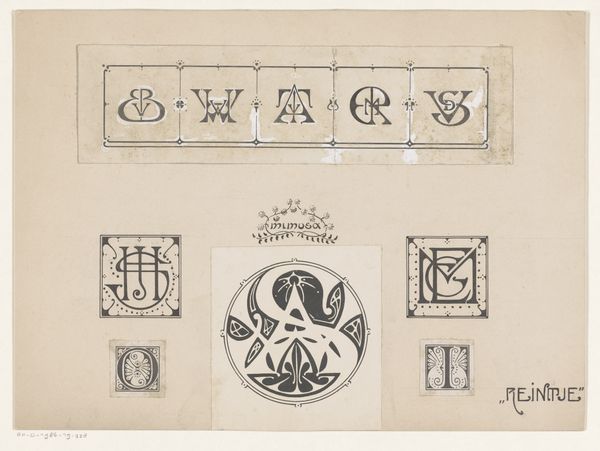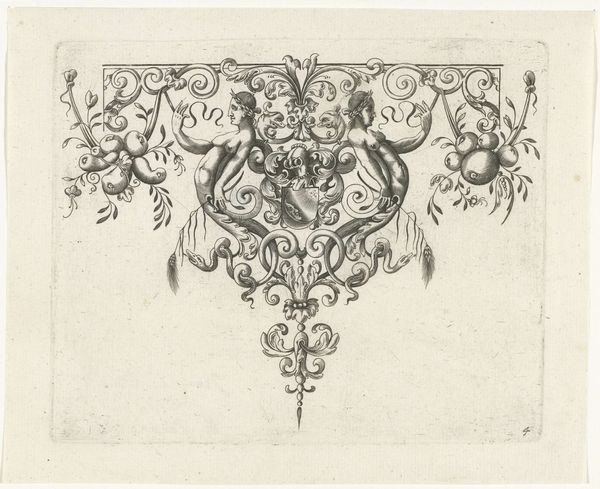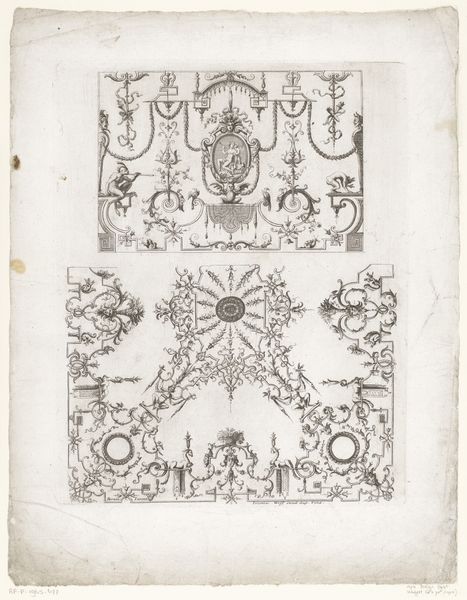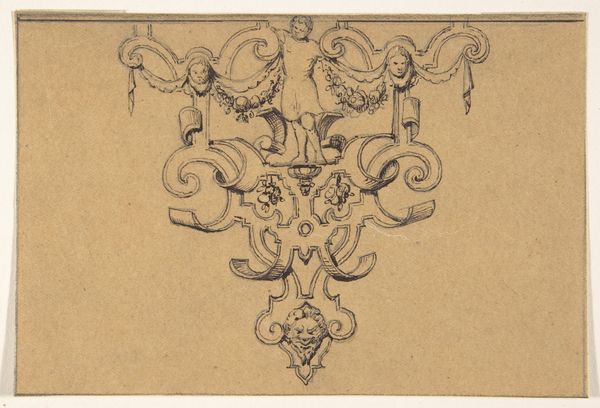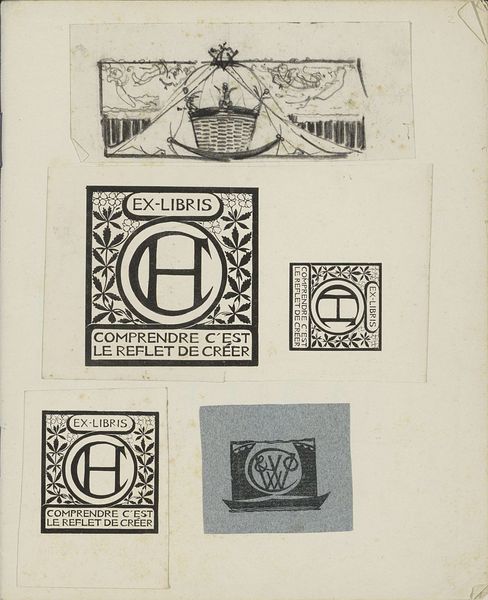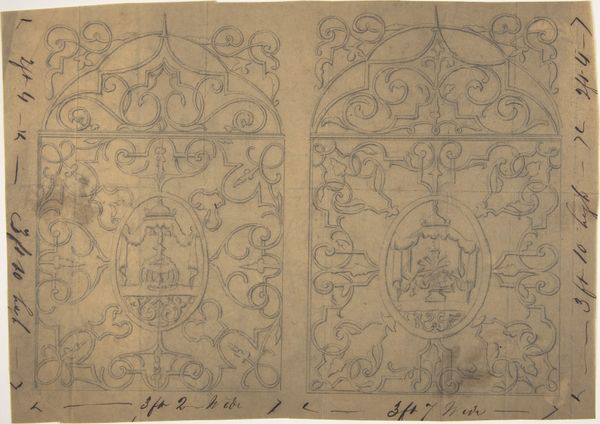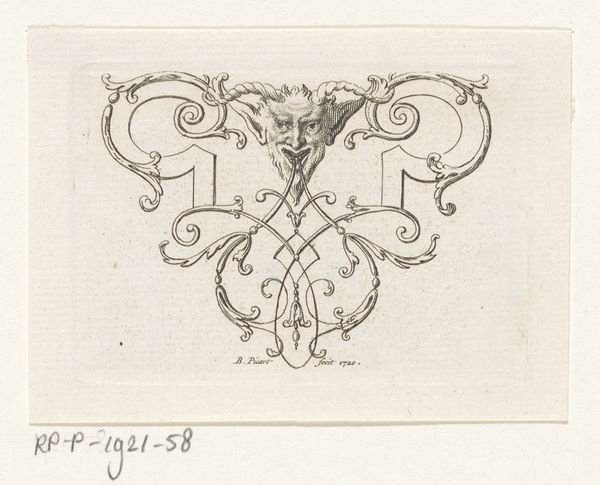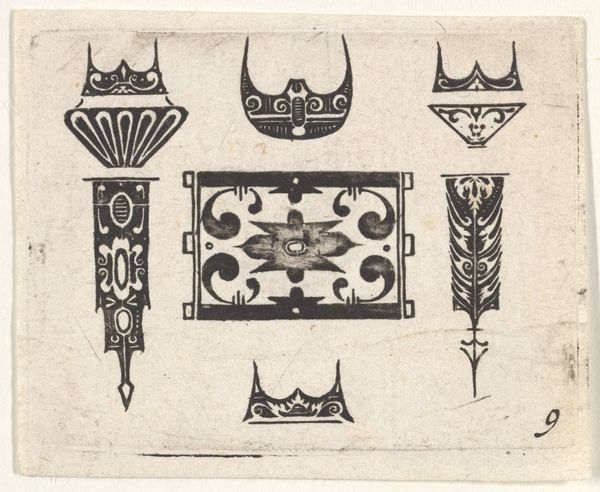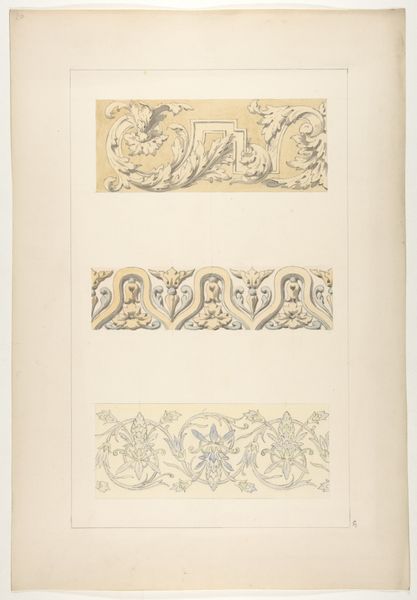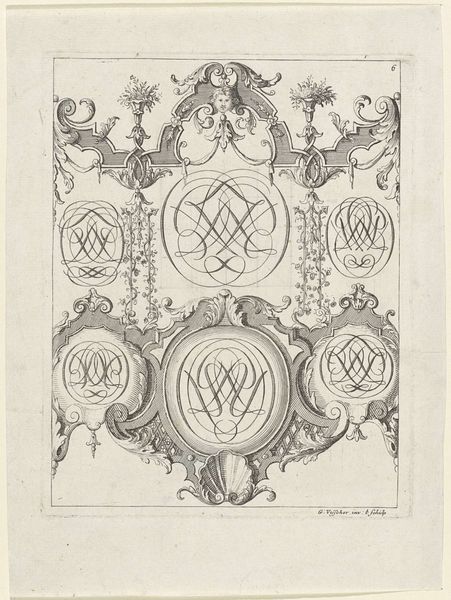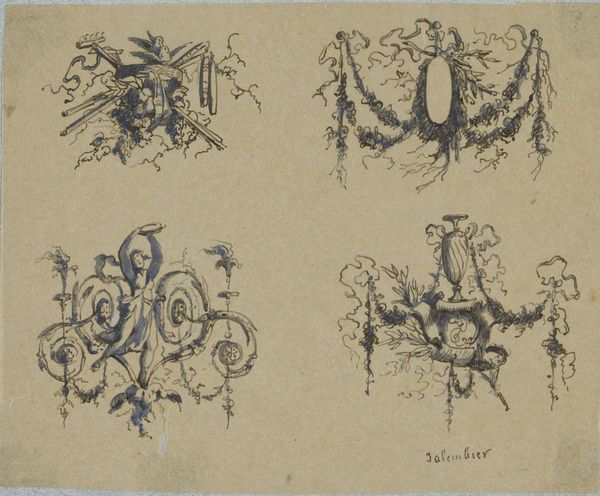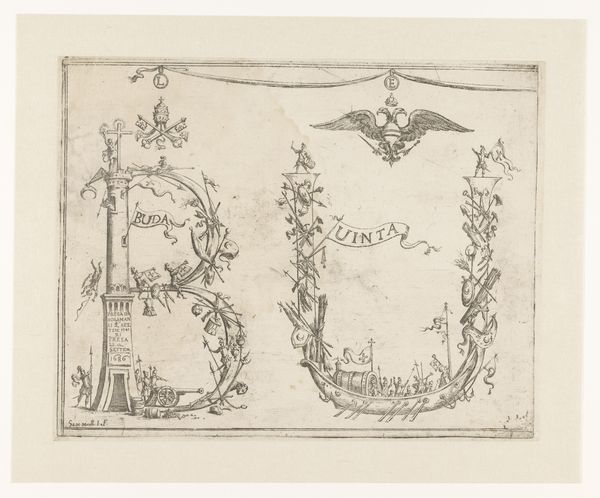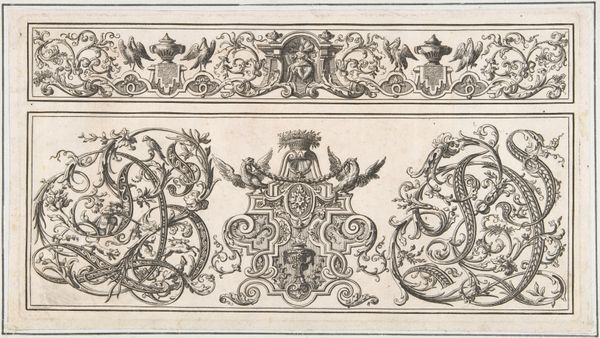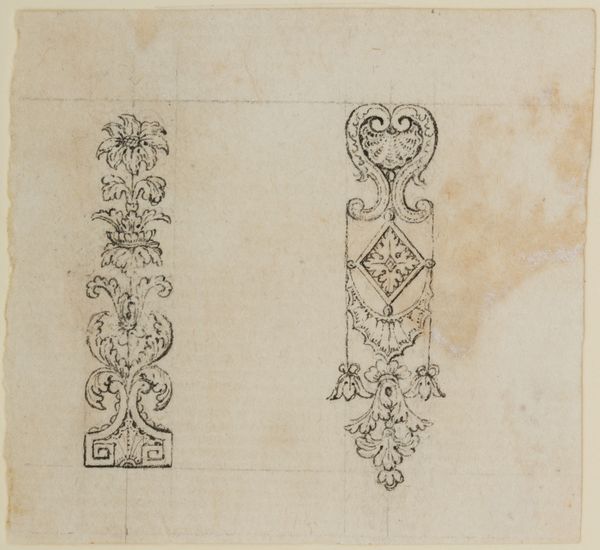
drawing, ink
#
drawing
#
comic strip sketch
#
art-nouveau
#
pen sketch
#
cartoon sketch
#
personal sketchbook
#
ink
#
ink drawing experimentation
#
geometric
#
pen-ink sketch
#
line
#
pen work
#
sketchbook drawing
#
storyboard and sketchbook work
#
sketchbook art
#
monochrome
Dimensions: height 96 mm, width 119 mm
Copyright: Rijks Museum: Open Domain
Curator: Let's turn our attention to "Blad met twee vignetten en twee monogrammen," a drawing rendered in ink by Mathieu Lauweriks, dating from 1895-1896. What catches your eye about it? Editor: It feels like a page ripped from a very serious but also slightly unsettling children’s book. There’s something almost gothic about the line work, despite the somewhat playful imagery. Curator: Lauweriks, a key figure in Dutch Art Nouveau, was deeply interested in geometric systems. This sheet demonstrates the principles he would apply to architectural design and decorative arts. He likely viewed this as an exercise in applying mathematical principles to design. Note the repeated motifs and the rigid structure. Editor: Absolutely, the geometric underpinnings are undeniable, but let's consider the symbolic weight of those repeated faces. They remind me of ancient masks or gargoyles, serving a protective or apotropaic function. The monograms, too, hint at a deeper meaning – a personal emblem or perhaps an indicator of the artist's engagement with the symbolism popular at the time. What might he have been signaling through these motifs? Curator: Well, the labor is also striking here; each precise line was drawn to fit his geometric rules. Think of this as the late 19th century, a time when industrial production was changing labor drastically. For Lauweriks to painstakingly render these by hand asserts a counter-narrative celebrating individual craft and skill, resisting mass production. Editor: A pertinent point. It’s as if he’s imbuing the design with a personalized touch to set it apart from anything mechanically reproduced, giving it power through careful detail and encoded significance. The very act of drawing it imbues it with cultural value beyond its function. Curator: Exactly! It questions what makes an object "art." It is a rejection of pure utility for an imbued object. The quality of the ink, the texture of the paper… all become central to the experience of this sketch. Editor: Looking closely has illuminated just how much these simple symbols tell us about not just Lauweriks but also about the concerns around labor, meaning, and artistic creation during the Art Nouveau period. Curator: Indeed, considering how materiality and the modes of artistic production can subtly express broader societal attitudes adds new dimensions to interpreting these images.
Comments
No comments
Be the first to comment and join the conversation on the ultimate creative platform.
